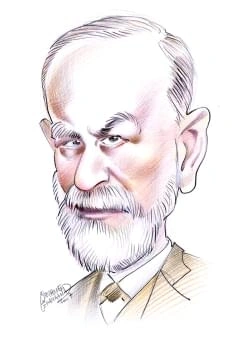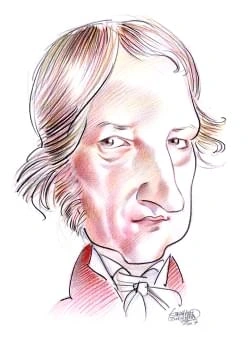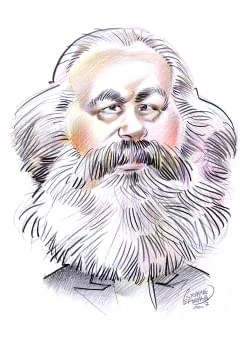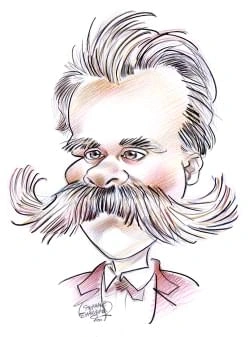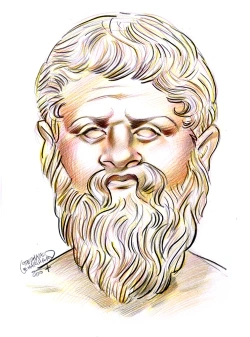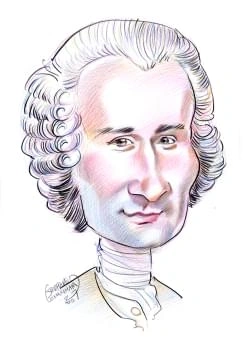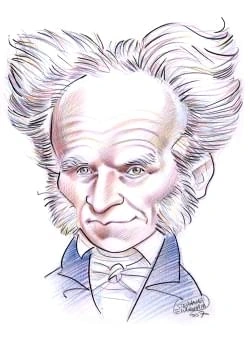193 résultats pour "rain"
-
National Parks and Preserves.
Some ibex raised in Italy’s 700 sq km (220 sq mi) Gran Paradiso National Park (1922) were transferred to aid herd restoration elsewhere in the country. Switzerlandreturned lynx to Swiss National Park to keep red deer populations in check. The growth of national parks also enabled many European countries to restore forests thathad given way to industrialization by the early 20th century. Africa’s wildlife was hunted heavily from the late 19th century well into the 20th century. By 1920 big-game h...
-
Nevada - geography.
The Truckee, Carson, and Walker rivers flow out of the Sierra Nevada, thread their way around several of the desert ranges, and also end in closed basins. The Walkerflows into Walker Lake, the Carson into Lahontan Reservoir. The major part of the Truckee’s flow is now diverted to Lahontan Reservoir, although as required by lawsome of it empties into Pyramid Lake. Because these three streams flow constantly, the lakes into which they empty never dry up. Winnemucca Lake formerly receivedoverflow w...
-
Nevada - USA History.
The Truckee, Carson, and Walker rivers flow out of the Sierra Nevada, thread their way around several of the desert ranges, and also end in closed basins. The Walkerflows into Walker Lake, the Carson into Lahontan Reservoir. The major part of the Truckee’s flow is now diverted to Lahontan Reservoir, although as required by lawsome of it empties into Pyramid Lake. Because these three streams flow constantly, the lakes into which they empty never dry up. Winnemucca Lake formerly receivedoverflow w...
-
Cuba - country.
Only two land mammals, the hutia, or cane rat, and the solenodon, a rare insectivore that resembles a rat, are known to be indigenous. The island has numerous batsand nearly 300 kinds of birds, including vultures, wild turkeys, quail, finches, gulls, macaws, parakeets, and hummingbirds. The bee hummingbird of Cuba is thesmallest bird in the world. Among the few reptiles are tortoises, caimans, the Cuban crocodile, and a species of boa that can attain a length of 3.7 m (12 ft). More than700 speci...
-
New Mexico - geography.
New Mexico’s major river is the Río Grande, originating in southern Colorado, and flowing southward for 760 km (470 mi) through the state. Between the San LuisValley and Española Valley the river flows in a deep canyon known as the Río Grande Gorge; then, below White Rock Canyon, it flows through several valleys containingagricultural land. Most of the water of the Río Grande is used to irrigate these valleys. The Río Grande’s waterflow in New Mexico is extremely low. One of the major tributarie...
-
New Mexico - USA History.
New Mexico’s major river is the Río Grande, originating in southern Colorado, and flowing southward for 760 km (470 mi) through the state. Between the San LuisValley and Española Valley the river flows in a deep canyon known as the Río Grande Gorge; then, below White Rock Canyon, it flows through several valleys containingagricultural land. Most of the water of the Río Grande is used to irrigate these valleys. The Río Grande’s waterflow in New Mexico is extremely low. One of the major tributarie...
-
Hawaii (state) - geography.
limestone along the coast. The volcanoes of the Hawaiian Islands are all so-called shield volcanoes, or lava domes. Unlike the volcanoes of Alaska and South America, those of Hawaii were notcreated by very explosive eruptions. Formed mostly by lava flows, they are great rounded mountain masses, rather than steep-sided cones. Mauna Kea, dormant forcenturies, is the highest mountain in the state. It rises to 4,205 m (13,796 ft) above sea level, and its summit is dotted with cinder cones formed by...
-
Hawaii (state) - USA History.
limestone along the coast. The volcanoes of the Hawaiian Islands are all so-called shield volcanoes, or lava domes. Unlike the volcanoes of Alaska and South America, those of Hawaii were notcreated by very explosive eruptions. Formed mostly by lava flows, they are great rounded mountain masses, rather than steep-sided cones. Mauna Kea, dormant forcenturies, is the highest mountain in the state. It rises to 4,205 m (13,796 ft) above sea level, and its summit is dotted with cinder cones formed by...
-
-
Asia - Geography.
Borneo, the world’s third largest island after Greenland and New Guinea. To the southeast is the Timor Sea separating the Asian island of Timor from the Australiancontinent. The Indian subcontinent is flanked by the Bay of Bengal on the east and the Arabian Sea on the west. The island of Sri Lanka and the much smaller Maldives andNicobar Islands trail away to the south. The Arabian Sea’s Gulf of Aden, the Red Sea, the Mediterranean Sea, and the Black Sea form an arc along the western rim of Asia...
-
Asia - History.
Borneo, the world’s third largest island after Greenland and New Guinea. To the southeast is the Timor Sea separating the Asian island of Timor from the Australiancontinent. The Indian subcontinent is flanked by the Bay of Bengal on the east and the Arabian Sea on the west. The island of Sri Lanka and the much smaller Maldives andNicobar Islands trail away to the south. The Arabian Sea’s Gulf of Aden, the Red Sea, the Mediterranean Sea, and the Black Sea form an arc along the western rim of Asia...
-
1900 - 1994: CHRONOLOGIE ARTISTIQUE
Antonio Gaudí fait la décoration intérieure de la cathédrale de Palma.1905Aleksandr Constantinovicht Glasounov est nommé professeur au conservatoire de Saint-Petersbourg, puis directeurjusqu'en 1928. Arnold Schoenberg compose le premier quatuor à cordes. Études d'Oscar Kokochka à l'école des Artsdécoratifs de Vienne. Composition durant les quatre années passées là de deux drames Le Sphinx et l'Épouvantail etAssassin espérance des femmes avec l'affiche Pieta, une des œuvres maîtresses de l'E...
-
Asia - geography.
the Himalayas, the world’s highest mountain system. The Pacific Ocean plate drifted westward, scraping along the Eurasian plate and slipping under its coastal edge. This created the islands of Japan, Taiwan, the Kurils, theRyūky ūs, and the Philippines. Southeast Asia lies at the intersection of the Eurasian, Pacific Ocean, and Indian Ocean plates. Over time the contact between these platescreated the mountain ranges of mainland Southeast Asia. The continued slow movement of the plates causes fr...
-
Asia - history.
the Himalayas, the world’s highest mountain system. The Pacific Ocean plate drifted westward, scraping along the Eurasian plate and slipping under its coastal edge. This created the islands of Japan, Taiwan, the Kurils, theRyūky ūs, and the Philippines. Southeast Asia lies at the intersection of the Eurasian, Pacific Ocean, and Indian Ocean plates. Over time the contact between these platescreated the mountain ranges of mainland Southeast Asia. The continued slow movement of the plates causes fr...
-
Regierungen der Bundesrepublik Deutschland.
Bundeskanzler Konrad Adenauer (CDU) Vizekanzler und Wirtschaft Ludwig Erhard (CDU) Auswärtiges Gerhard Schröder (CDU) Inneres Hermann Höcherl (CSU) Justiz Wolfgang Stammberger (FDP) bis 19.11.1962 * Finanzen Heinz Starke (FDP) bis 19.11.1962 * Ernährung, Landwirtschaft und Forsten Werner Schwarz (CDU) Arbeit und Sozialordnung Theodor Blank (CDU) Verteidigung Franz Josef Strauß (CSU) Verkehr Hans-Christoph Seebohm(DP/CDU) Post- und Fernmeldewesen Richard Stücklen (CSU) Wohnungsbau, Städtebau undR...
-
Guyana - country.
European patterns of living. People of mixed African and European ancestry form a distinct group in Guyana, maintaining closer social ties to the European communitythan to the African Guyanese community. Asians from the Indian subcontinent began to arrive in the 19th century, following the abolition of slavery in Guyana, to work as indentured and contract laborers. Theycontinued to arrive until 1917, when Britain outlawed indentured servitude. Thousands of Indians chose to remain in Guyana after...
-
Dominica - country.
Other crops are being promoted to diversify the economy away from reliance on bananas. They include coffee, cacao, mangoes, citrus fruit, and root vegetables. Pumice is quarried and exported on Dominica. Manufacturing is on a small scale and largely limited to the processing of farm products. The main manufactured goodsare fruit juices, alcoholic beverages, soap, and essential oils. The island also has electronic assembly plants, data-processing companies, and garment manufacturers. The governme...
-
-
Frog (animal).
which means that their body temperature depends on the temperature of the surrounding environment. Few species can tolerate temperatures below 4°C (40°F) orabove 40°C (104°F), and many species can survive only within a narrower range of temperatures. In addition, frogs’ thin, moist skin offers little protection againstwater loss, and when on land the animals must guard against drying out. Many frogs are active at night because temperatures are cooler and humidity is higher thanduring the day. In...
-
Frog (animal) - biology.
which means that their body temperature depends on the temperature of the surrounding environment. Few species can tolerate temperatures below 4°C (40°F) orabove 40°C (104°F), and many species can survive only within a narrower range of temperatures. In addition, frogs’ thin, moist skin offers little protection againstwater loss, and when on land the animals must guard against drying out. Many frogs are active at night because temperatures are cooler and humidity is higher thanduring the day. In...
-
Sri Lanka - country.
acacias, and orchids are found in many areas. The animal life of Sri Lanka includes 88 species of mammals, 21 of which are threatened with extinction. The Asian elephant, cheetah, leopard, and several species ofmonkey are endangered and officially protected. The island’s many species of primates include the long-tailed langur, toque macaque, and slender loris. Other mammalsinclude the sloth bear, several species of deer, mongoose, and wild boar. Reptiles are numerous, with 144 known species. Som...
-
RAINER-MARIA RILKE (photographie)
L'ŒUVRE DE RAINER-MARIA RILKE VIE ET CHANSON (1894) DANS L'ATTENTE DU CHEMIN DE LA VIE (18g6) MAINTENANT ET A L'HEURE DE NOTRE MORT (18g6) SACRIFICE AUX LARES (18g6) POUR LE GEL MATINAL (1897) AURÉOLE DE R~VES (1897) A VENT ( 1 8g8) SANS PRÉSENT (18g8) VERS LA VIE (18g8) DEUX HISTOIRES DE PRAGUE (1899) POUR MA F~TE (1899) HISTOIRES DU BON DIEU ET D'AUTRES (1goo) LES DERNIERS (1902) LE LIVRE DES IMAGES (1902 et 1906...
-
Air Pollution.
Several pollutants attack the ozone layer. Chief among them is the class of chemicals known as chlorofluorocarbons (CFCs), formerly used as refrigerants (notably in airconditioners), as agents in several manufacturing processes, and as propellants in spray cans. CFC molecules are virtually indestructible until they reach thestratosphere. Here, intense ultraviolet radiation breaks the CFC molecules apart, releasing the chlorine atoms they contain. These chlorine atoms begin reacting withozone, br...
-
Amphibian (animal) - biology.
strong enough to kill potential predators. C Hearing, Vision, and Vocalizations Amphibians rely on their senses to find food and evade predators. Amphibians lack external ears but have well-developed internal ears. Hearing is most acute in frogs,which typically have a middle ear cavity for transferring sound vibrations from the eardrum, or tympanum, to the inner ear. Frogs and toads also use their keen hearingin communicating with one another. Using a true voice box, or larynx, and a large, exp...
-
Rainer Maria RILKE : Élégies de Duino
Raine r Maria Rilk e. Photo Roger- Viollet. Commencées lors du séjour de Rilke à Dui no , près de Trieste, et terminées à Mu z ot , en Valais, les Élégies ac compagnent le poète dans une des périodes les plus noires de son existence, au cours de laquelle il n'arriv e à se fixer nulle part et songe à faire une cure psychanal ytique. Le livre Une méditation sur la mort et sur le destin humain U ne constatation domine les premières élégies...
-
Titan (astronomy) - astronomy.
The terrain is rugged and shows evidence of erosion from methane rain and from liquid seeping from underground. The rocklike ice chunks on the surface,photographed by Huygens, have a rounded shape that could result from their tumbling in flash floods. Scientists have also identified possible cold volcanoes that mayspew a mix of ammonia and water ice. Titan is Saturn’s densest moon. Planetary scientists theorize that Titan has a rocky core about 3,400 km (about 2,100 mi) in diameter, surrounded b...
-
-
Amphibians.
AN AMPHIBIAN’S LIFE Amphibians that live in cold places spend most of their time trying to keep wet and warm. In hot places,they try to keep wet and cool and usually come out only at night. During the day, they stay under rocksor logs or in the ground. Amphibians hibernate (become inactive) during cold winters. They become inactive in hot places during the summer. Almost all grown-up amphibians are meat eaters. Frogs and salamanders have sticky tongues. They flickout their tongues to catch ins...
-
Ape - biology.
previous infant has been weaned. This process—like all aspects of ape development—takes a remarkable length of time. A gibbon is weaned by the age of about 2years, while chimps take more than 4 years. Like young monkeys, young apes are carried by their mothers. They either cling to the mother's belly or, in the case ofolder chimps, ride on her back. In great apes, infant care is largely the job of the females, while in some gibbons the mother hands over responsibility to the fatherwhen the infan...
-
Excerpt from Sense and Sensibility - anthology.
was just arrived, and quitted not his hold till he had seated her in a chair in the parlour. Elinor and her mother rose up in amazement at their entrance, and while the eyes of both were fixed on him with an evident wonder and a secret admiration whichequally sprung from his appearance, he apologised for his intrusion by relating its cause, in a manner so frank and so graceful, that his person, which wasuncommonly handsome, received additional charms from his voice and expression. Had he bee...
-
Amerikanischer Film.
Frankenstein, 1975; Frankenstein Junior ). Der „New-Hollywood”-Bewegung, die sich Ende der sechziger Jahre gebildet hatte, um für größere gestalterische Freiheiten und weniger Abhängigkeit vom Kommerz zu kämpfen, waren Regisseure wie Dennis Hopper ( Easy Rider, 1969; Easy Rider ), Arthur Penn ( Bonnie and Clyde, 1967; Bonnie und Clyde ), Robert Altman ( Nashville, 1975; Nashville ), Peter Bogdanovich ( The Last Picture Show, 1971; Die letzte Vorstellung ), Francis Ford Coppola ( The Go...
-
Rodeln: Medaillengewinner der Weltmeisterschaften.
1955 Hans Krausner/Herbert Thaler, AUT Josef Isser/Maria Isser, AUT Fritz Nachmann/Josef Strillinger, FRG 1957 Fritz Nachmann/Josef Strillinger, FRG Giorgio Pichler/Giovanni Graber, ITA Erich Raffl/Ewald Walch, AUT 1958 Fritz Nachmann/Josef Strillinger, FRG Jerzy Koszla/Janina Suszczewska, POL Ryszard Pedrak/Halina Lacheta, POL 1959 ausgefallen 1960 Reinhold Frosch/Ewald Walch, AUT Herbert Thaler/Helmut Thaler, AUT Horst Tiedge/Hans Plenk, FRG 1961 Roman Pichler/Raimondo Prinroth, ITA David Maro...
-
Excerpt from A Christmas Carol - anthology.
External heat and cold had little influence on Scrooge. No warmth could warm, no wintry weather chill him. No wind that blew was bitterer than he, no falling snowwas more intent upon its purpose, no pelting rain less open to entreaty. Foul weather didn’t know where to have him. The heaviest rain, and snow, and hail, and sleet,could boast of the advantage over him in only one respect. They often “came down” handsomely and Scrooge never did. Nobody ever stopped him in the street to say, with g...
-
Amerikanischer Film.
1943 For Whom the Bell Tolls (Wem die Stunde schlägt), Sam WoodHeaven Can Wait (Ein himmlischer Sünder), Ernst Lubitsch 1944 Cover Girl (Es tanzt die Göttin), Charles VidorLaura (Laura), Otto PremingerTo Have and Have Not (Haben und Nichthaben), Howard Hawks 1945 Mildred Pierce (Solange ein Herz schlägt), Michael CurtizThe Lost Weekend (Das verlorene Wochenende), Billy WilderThe Spiral Staircase (Die Wendeltreppe), Robert Siodmak 1946 Gilda (Gilda), Charles VidorMy Darling Clementine (Tombstone/...
-
Aztec Empire.
tribute to the empire in agricultural products, which were used to finance public projects. All able-bodied men owed military service to the empire. Citizens could also bedrafted to work on public lands or build temples, dikes, aqueducts, and roads. Although Aztec society had strict classes, a person’s status could change based on his or her contribution to society. Commoners could improve their rank, especially byperforming well in battle, and become prosperous landowners. Young people of some...
-
-
Aztec Empire - USA History.
tribute to the empire in agricultural products, which were used to finance public projects. All able-bodied men owed military service to the empire. Citizens could also bedrafted to work on public lands or build temples, dikes, aqueducts, and roads. Although Aztec society had strict classes, a person’s status could change based on his or her contribution to society. Commoners could improve their rank, especially byperforming well in battle, and become prosperous landowners. Young people of some...
-
Czech Republic - country.
enforcement of environmental regulations. Environmental considerations have also led some government officials to promote nuclear energy as a key source of powerfor the country’s future. The Czech Republic produces most of its energy by burning domestic coal. Much of the coal burned is low quality with a high ash and sulfur content—a key componentof acid rain—producing high levels of air pollution. Forests in the Czech Republic are among the most seriously affected by acid rain in all of Europe....
-
New Brunswick - Geography.
Grand Lake, the largest lake in New Brunswick, is in the lowlands, east of Fredericton. Most other lakes are located in the northern and southwestern parts of NewBrunswick. D Climate New Brunswick has a continental climate that is moderated by maritime influences in the coastal areas. As a result, coastal regions are slightly warmer in the winter andslightly cooler in the summer than are interior regions. Annual temperature variations are large, with the January mean usually at least 25 to 28°C...
-
New Brunswick - Canadian History.
Grand Lake, the largest lake in New Brunswick, is in the lowlands, east of Fredericton. Most other lakes are located in the northern and southwestern parts of NewBrunswick. D Climate New Brunswick has a continental climate that is moderated by maritime influences in the coastal areas. As a result, coastal regions are slightly warmer in the winter andslightly cooler in the summer than are interior regions. Annual temperature variations are large, with the January mean usually at least 25 to 28°C...
-
Alabama (state) - geography.
indentations along the coast are measured, the state’s shoreline is 977 km (607 mi) long. It includes the shores of Mobile Bay, an inlet 56 km (35 mi) long at the mouthof the Mobile River. Barrier beaches partly block the entrance to the bay, leaving narrow openings on either side of Dauphin Island. Dauphin and other islands alongAlabama’s coast west of Mobile Bay are separated from the mainland by Mississippi Sound. D Climate Alabama has a humid subtropical climate, with short, relatively mild...
-
Alabama (state) - USA History.
indentations along the coast are measured, the state’s shoreline is 977 km (607 mi) long. It includes the shores of Mobile Bay, an inlet 56 km (35 mi) long at the mouthof the Mobile River. Barrier beaches partly block the entrance to the bay, leaving narrow openings on either side of Dauphin Island. Dauphin and other islands alongAlabama’s coast west of Mobile Bay are separated from the mainland by Mississippi Sound. D Climate Alabama has a humid subtropical climate, with short, relatively mild...
-
Dwight D.
maneuvers in Louisiana in 1941, he played a leading role as a staff officer, adding to his reputation and securing him a promotion to brigadier general. On December 7,1941, Japan attacked Pearl Harbor, Hawaii, and the next day the United States entered World War II against the Axis Powers (Japan, Germany, and Italy). A weeklater, the army’s new chief of staff, General George C. Marshall, called Eisenhower to Washington, D.C., and put him in charge of the War Plans Division. Opinions differed on...
-
Chile - country.
D Plant and Animal Life The indigenous plant life of Chile varies according to climatic zone. Plant life in the northern region includes brambles and cactus and has little variety. Here, theAtacama provides one of the best examples on Earth of an absolute desert. The more humid Central Valley supports several species of cacti, espino (a thorny shrub),grasses, and the Chilean pine, which bears edible nuts. Dense rain forests are located south of Valdivia with laurel, magnolia, false beech, and v...
-
-
Greece - country.
minerals, such as chromium, copper, uranium, and magnesium, are relatively small. Greece’s small petroleum deposits, located under the Aegean Sea near the island ofThásos, are rapidly being depleted. There are no significant reserves of natural gas. Greece’s forests, probably abundant in ancient times, have been significantly depleted. Subsequent soil erosion has made reforestation efforts difficult. Although muchof Greece’s soil is rocky and dry, the country’s mountains are interspersed with sm...
-
Arkansas - geography.
temperature rises to the upper 30°s C (lower 100°s F). C2 Precipitation Arkansas receives about 1,000 to 1,300 mm (about 40 to 50 in) of precipitation a year, and some areas receive even more. Most of the rain comes during winter andspring and at times is so heavy as to cause flooding. Snow is rare in the south but amounts to more than 250 mm (10 in) a year in the mountains. C3 Growing Season Arkansas has a long growing season. It averages 211 days for the state as a whole and ranges from 241...
-
Arkansas - USA History.
temperature rises to the upper 30°s C (lower 100°s F). C2 Precipitation Arkansas receives about 1,000 to 1,300 mm (about 40 to 50 in) of precipitation a year, and some areas receive even more. Most of the rain comes during winter andspring and at times is so heavy as to cause flooding. Snow is rare in the south but amounts to more than 250 mm (10 in) a year in the mountains. C3 Growing Season Arkansas has a long growing season. It averages 211 days for the state as a whole and ranges from 241...
-
Florida - USA History.
accidentally introduced into the region in the 1880s, and it spread with alarming rapidity throughout the upper reaches of the river. The plant is very difficult toeradicate, and it has also clogged the channels of other Florida rivers. To increase drainage of the Everglades, which drain naturally to Florida Bay and the Gulf ofMexico, a number of drainage channels and canals have been built across southern Florida. Among the rivers flowing from the peninsula to the Gulf of Mexico are the Suwanne...
-
Wyoming (state) - geography.
The basins, which lie in the rain shadow of mountains, are very dry, with an average annual precipitation of about 250 mm (about 10 in) or less; the Great Plains regionhas an annual average of about 380 mm (about 15 in), and the Black Hills region receives slightly more. Thunderstorms and hailstorms are relatively frequent insummer. The annual snowfall ranges from about 500 mm (about 20 in) in the Bighorn Basin to well over 5,100 mm (over 200 in) in the higher mountains, where annualprecipitatio...
-
Wyoming (state) - USA History.
The basins, which lie in the rain shadow of mountains, are very dry, with an average annual precipitation of about 250 mm (about 10 in) or less; the Great Plains regionhas an annual average of about 380 mm (about 15 in), and the Black Hills region receives slightly more. Thunderstorms and hailstorms are relatively frequent insummer. The annual snowfall ranges from about 500 mm (about 20 in) in the Bighorn Basin to well over 5,100 mm (over 200 in) in the higher mountains, where annualprecipitatio...
-
Radar.
gathers the weak returning radar signals and converts them into an electric current. Because a radar antenna may both transmit and receive signals, the duplexerdetermines whether the antenna is connected to the receiver or the transmitter. The receiver determines whether the signal should be reported and often does furtheranalysis before sending the results to the display. The display conveys the results to the human operator through a visual display or an audible signal. B1 The Antenna The rec...
-
Vermont - geography.
Forests cover 78 percent of Vermont. Most of the trees are deciduous, principally the maple, elm, birch, beech, oak, hickory, ash, cherry, and butternut. The state treeis the sugar maple, which provides Vermont’s famous maple syrup. Conifers are common in some mountain areas and include mainly the white pine, red spruce,hemlock, and cedar. A great variety of ferns have been found within the state. Among the more common wildflowers that grow in Vermont are anemones, arbutuses,violets, lilacs, dai...
-
-
Vermont - USA History.
Forests cover 78 percent of Vermont. Most of the trees are deciduous, principally the maple, elm, birch, beech, oak, hickory, ash, cherry, and butternut. The state treeis the sugar maple, which provides Vermont’s famous maple syrup. Conifers are common in some mountain areas and include mainly the white pine, red spruce,hemlock, and cedar. A great variety of ferns have been found within the state. Among the more common wildflowers that grow in Vermont are anemones, arbutuses,violets, lilacs, dai...
-
Mammal - biology.
On land, mammals live in many different habitats, and at a wide range of altitudes. Many mammals dig burrows as refuges or as places to raise their young, but somehave developed a largely subterranean lifestyle, feeding on small animals or plant roots beneath the soil's surface. These animals, including moles and mole-rats, digthrough the ground either with spadelike front paws or with their teeth, and they detect danger by being highly sensitive to vibrations transmitted through the soil.Most m...
}})
